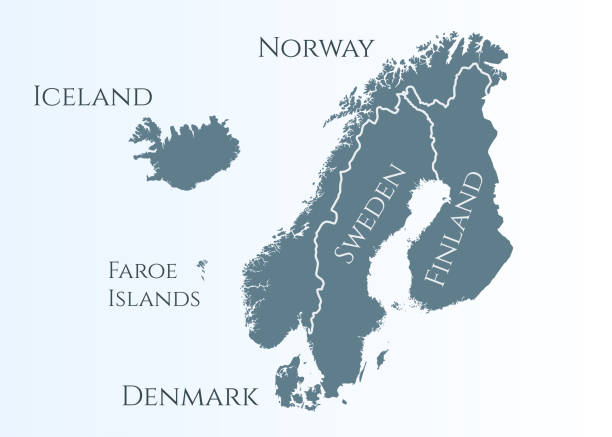Introduction
There are three countries in the Scandinavian peninsula are unitedly called the Scandinavian countries or the Scandinavian region. The Scandinavian region, consisting of the countries of Norway, Sweden, and Denmark, is a unique and fascinating area of the world. Known for its breathtaking natural beauty, rich cultural heritage, and strong economy, the region continues to captivate visitors and residents alike. In this article, we will take a closer look at the geography and climate, history and culture, economy and industry, and natural beauty and tourist attractions of the Scandinavian region.
Geography and Climate
The Scandinavian region is located in northern Europe, with Norway and Sweden both situated on the Scandinavian Peninsula, while Denmark is located just south of Sweden. The region is known for its cold and harsh winters, with temperatures frequently dropping below freezing. Despite this, the summer months are relatively mild and pleasant, making it a popular time for outdoor activities and tourism.
History and Culture
The history of the Scandinavian region is rich and diverse, with a long and fascinating cultural heritage. From the Vikings of Norway and Denmark to the traditional Sami culture of northern Sweden, the region is steeped in history and tradition. The culture of the Scandinavian region is also known for its love of the arts, with a thriving music and visual arts scene, as well as a passion for outdoor activities and preserving the natural beauty of the region.
Economy and Industry
The Scandinavian region is known for its strong and stable economy, with a focus on industry, innovation, and sustainability. The region is a leading producer of oil and natural gas, and is also home to a thriving technology sector, with many major tech companies headquartered in the area. Additionally, the region is a major hub for shipping and transportation, with a well-developed network of roads, rails, and ports.
Natural Beauty and Tourist Attractions
The Scandinavian region is renowned for its breathtaking natural beauty, with stunning fjords, lakes, and forests. Some of the region’s most popular tourist destinations include the city of Oslo, Norway’s famous fjords, and the Swedish capital, Stockholm. Additionally, the region is home to many world-class museums, including the Munch Museum in Oslo and the National Museum of Denmark in Copenhagen.
Conclusion
The Scandinavian region is a truly unique and fascinating area of the world, with a rich history and culture, strong economy, and breathtaking natural beauty. Whether you are a resident or a visitor, the region is sure to leave a lasting impression.
Bibliography
- “Scandinavia.” Encyclopædia Britannica, Encyclopædia Britannica, Inc., www.britannica.com/place/Scandinavia.
- “Geography of Scandinavia.” WorldAtlas, www.worldatlas.com/articles/geography-of-scandinavia.html.
- “The Nordic Countries.” The World Bank, The World Bank Group, 22 Oct. 2021, data.worldbank.org/region/NOC.
- “The Scandinavian Region.” Lonely Planet, www.lonelyplanet.com/scandinavia.



 For all latest articles, follow on Google News
For all latest articles, follow on Google News
Hello bishleshon.com administrator, Thanks for the well-researched post!